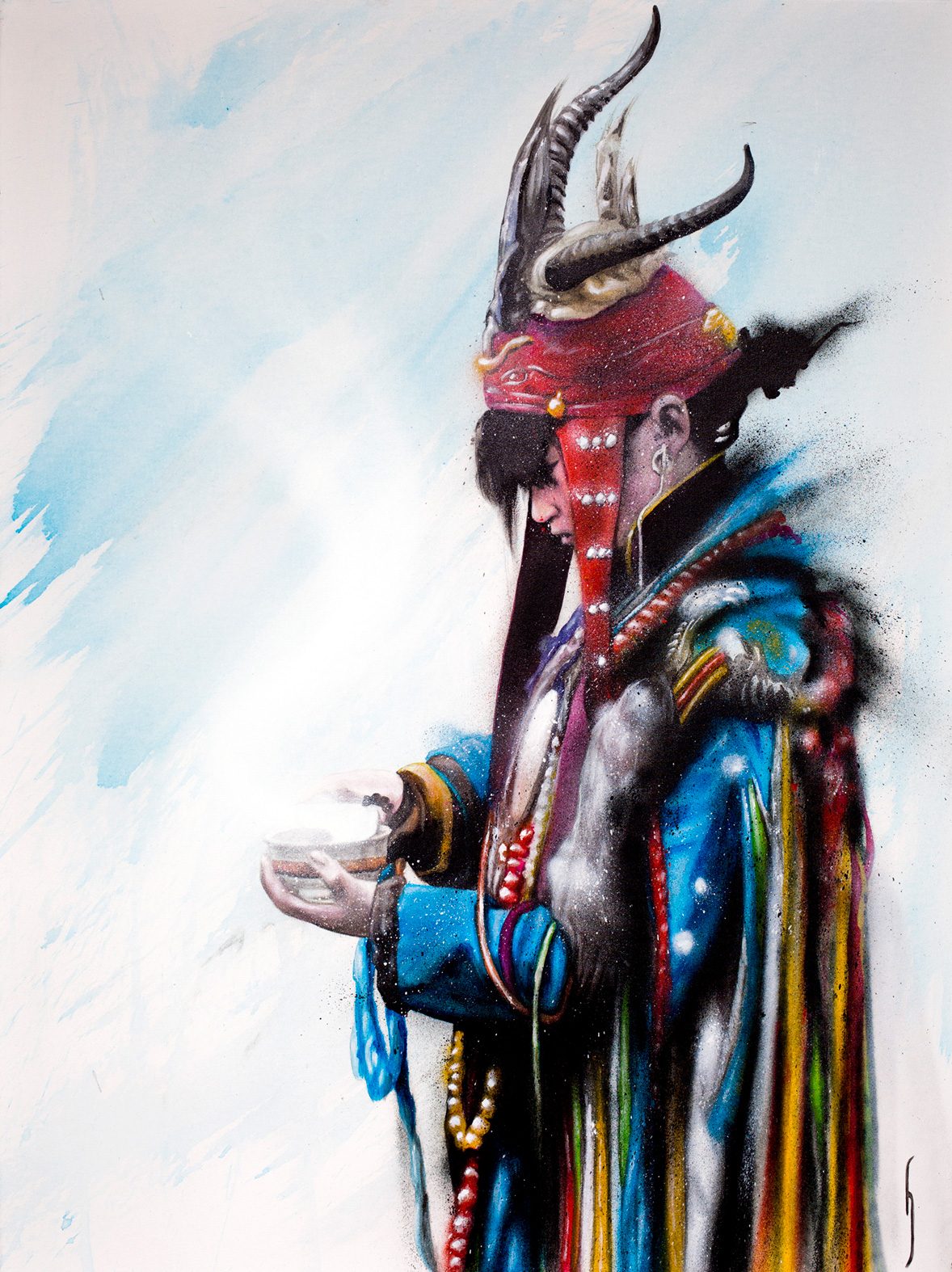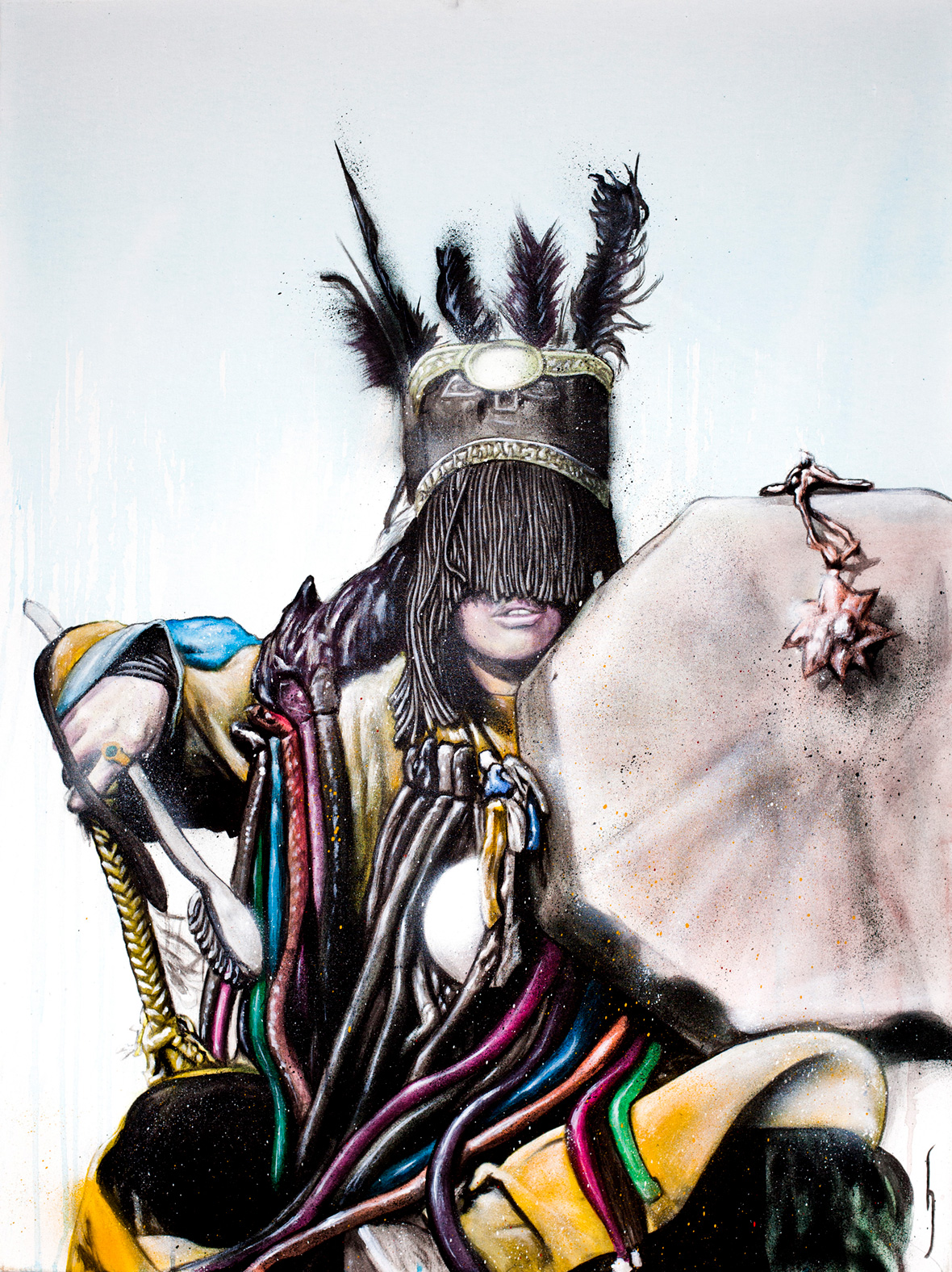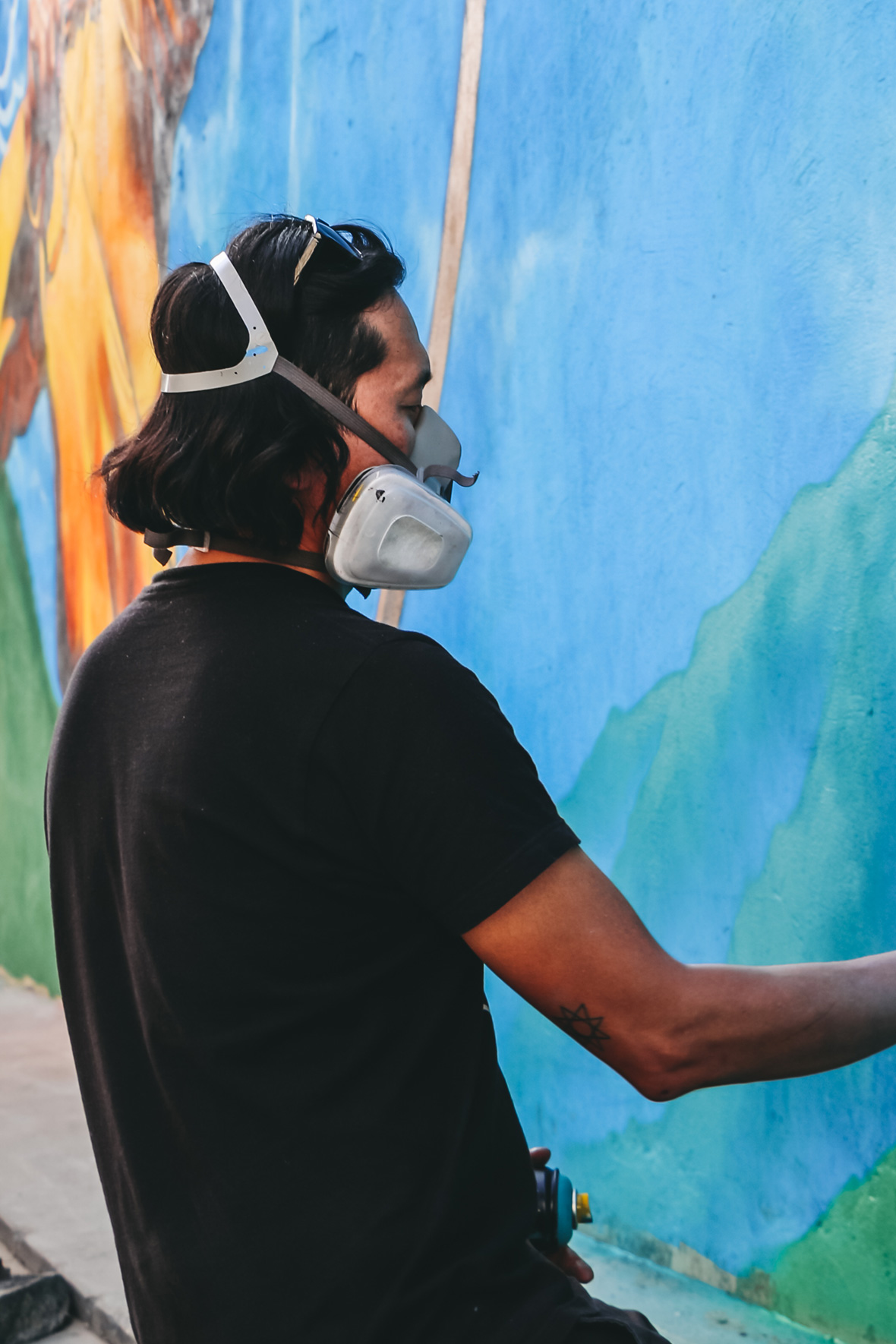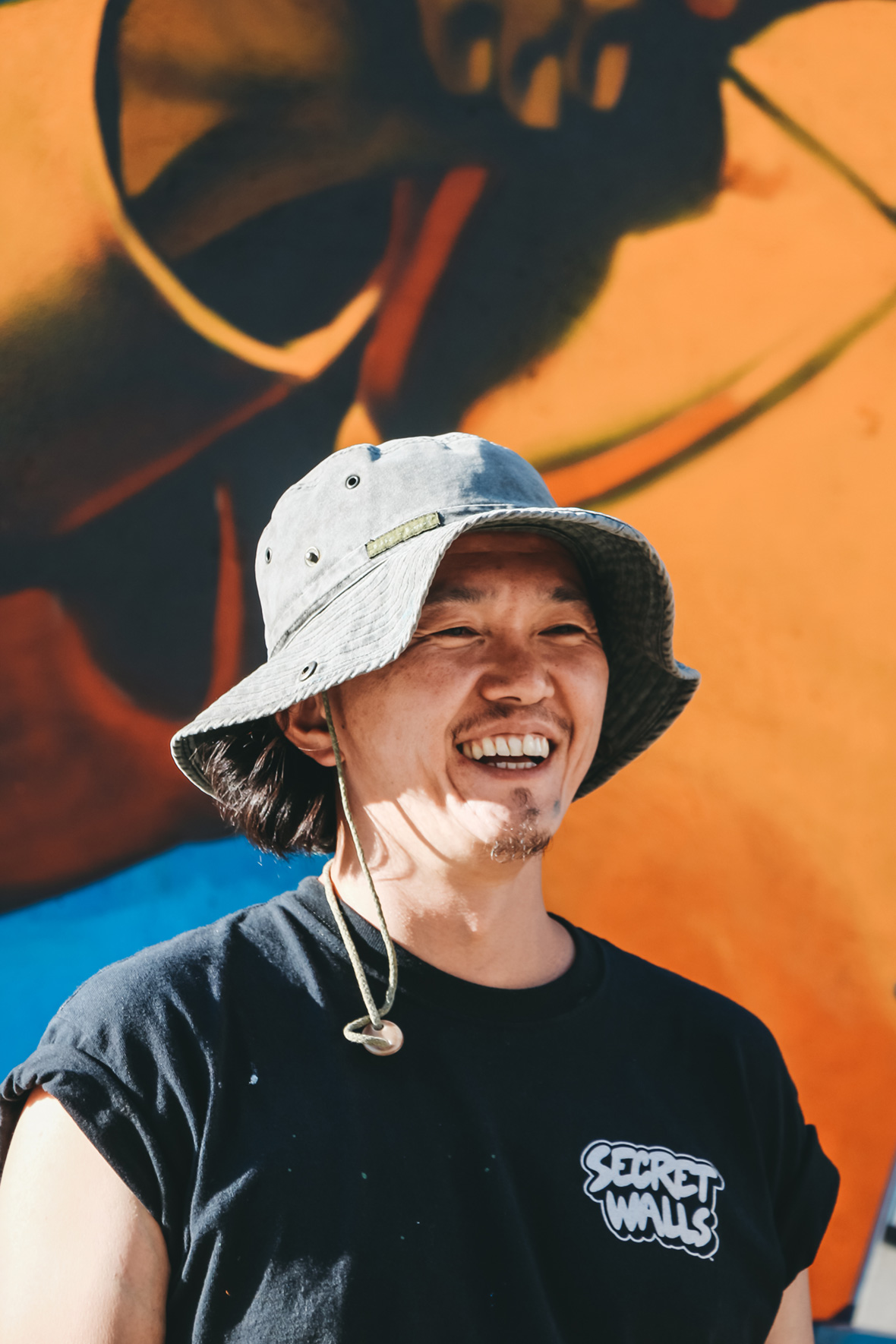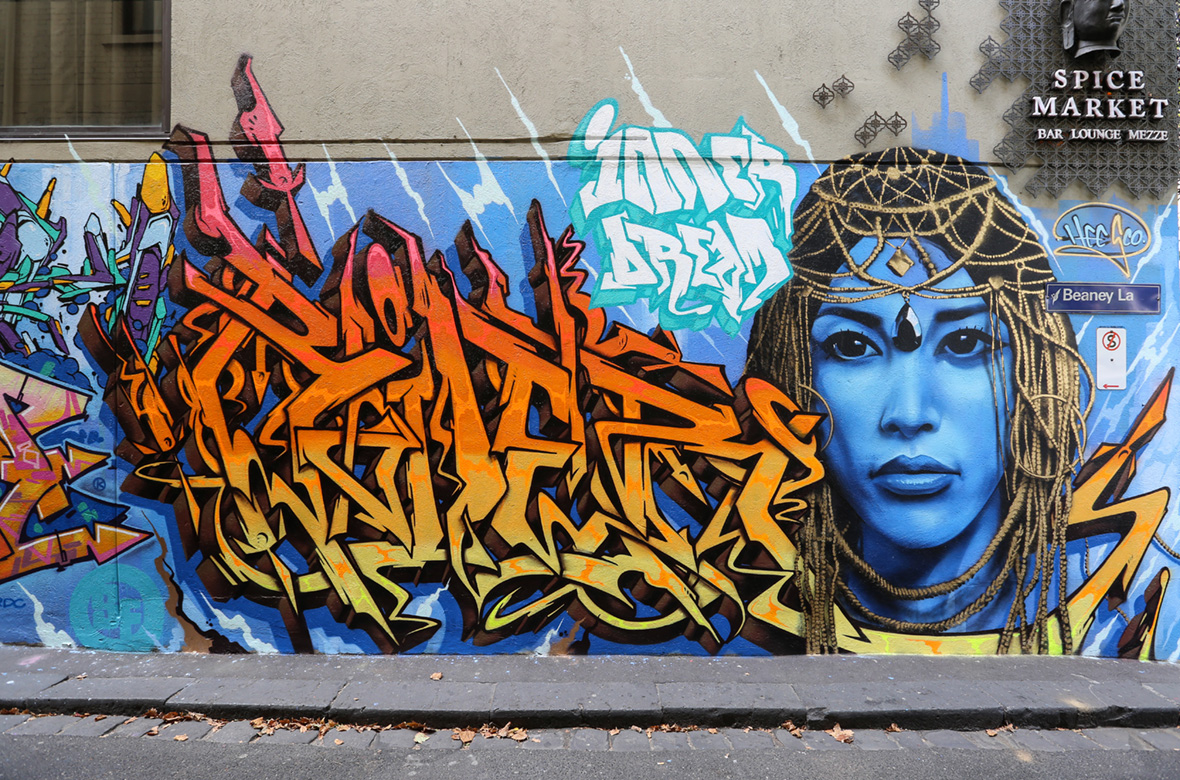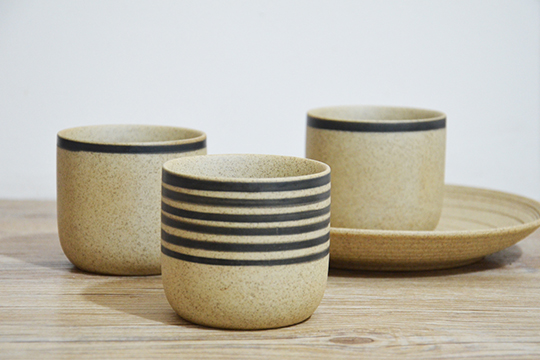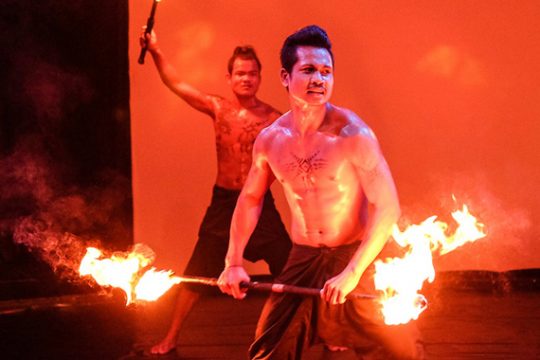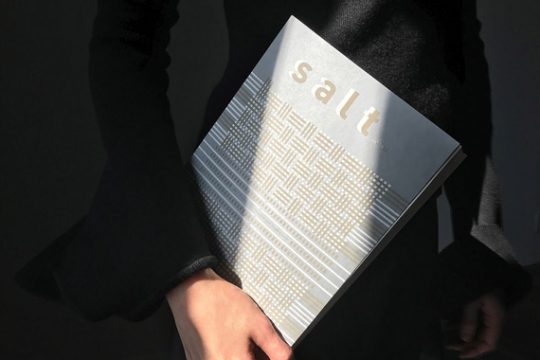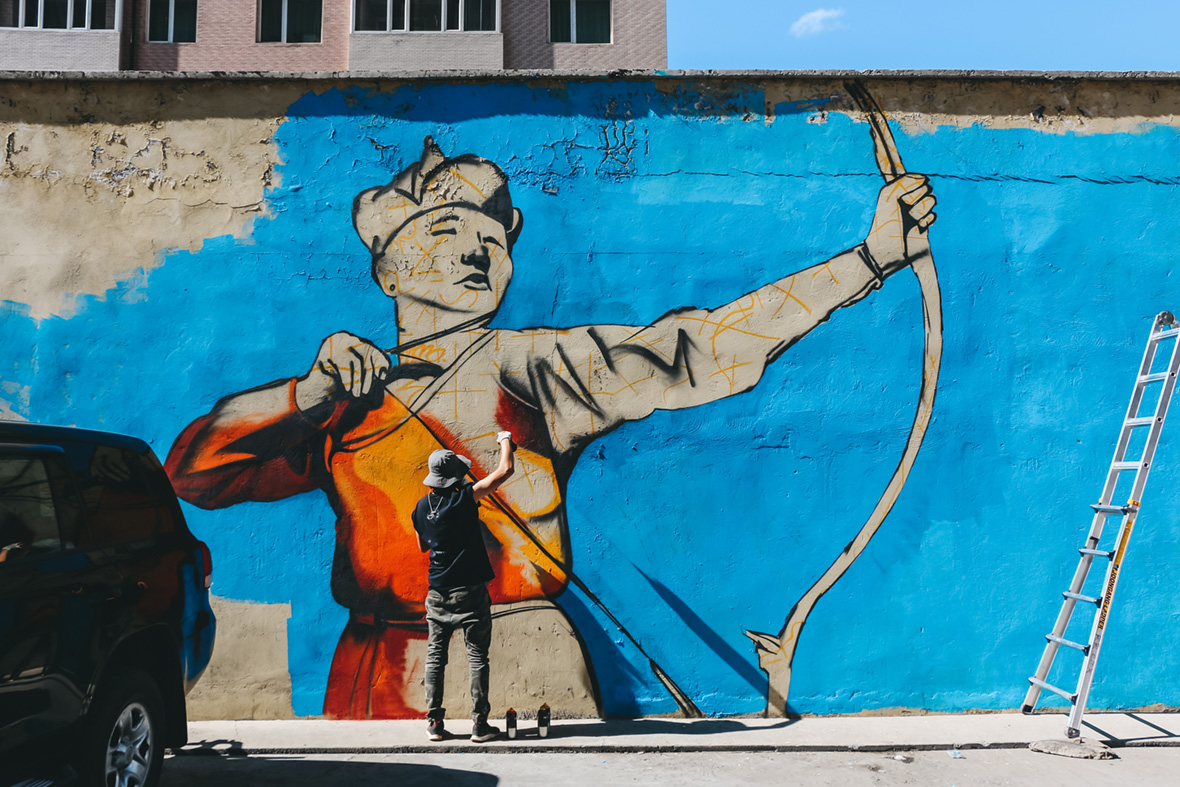
Khosnaran Khurelbaatar (a.k.a Heesco) is an internationally renowned artist who’s best known for his larger-than-life murals. The Mongolia-born artist initially found his footing in the art world with his street art in Australia, but a willingness to experiment with different mediums and techniques has proven that the label of “street artist” simply doesn’t do him justice. “It shouldn’t matter what medium or tools I am using,” he says. “I want to be able to use anything at my disposal to create the images I want to create.”
Khosnaran Khurelbaatar(a.k.a Heesco)是一位国际知名的艺术家,以其令人印象深刻的巨型壁画闻名。这位出生于蒙古的艺术家最初在澳大利亚以街头艺术找到了立足点,但他不断地实验和尝试各种技术和媒介,证明了单单“街头艺术家”这个称号并不能满足他。“无论使用哪一种媒介或工具都无关紧要。”他说,“我希望能够使用任何我可以使用的东西,来创造我想要创造的图像。”
Heesco’s dreams of becoming an artist were already abrew in his teenage years. But opportunities were limited for a young, aspiring creative in Mongolia. Discouraged, he set aside his artistic ambitions and moved to Australia to pursue a degree in business management, a pragmatic decision that was meant to placate his parents. But once in Australia, he had a change of heart, enrolling at the Sydney College of the Arts instead.
成为艺术家的梦想在 Heesco 青少年时就已经成形。然而在蒙古,年轻有抱负的艺术家能获得的机会有限。他感到相当气馁,于是放下了自己的艺术野心,搬到澳大利亚攻读商业管理学位,这是一个用于安抚父母的务实决定。但是一到澳大利亚他就改变了主意,转而就读悉尼大学艺术学院。
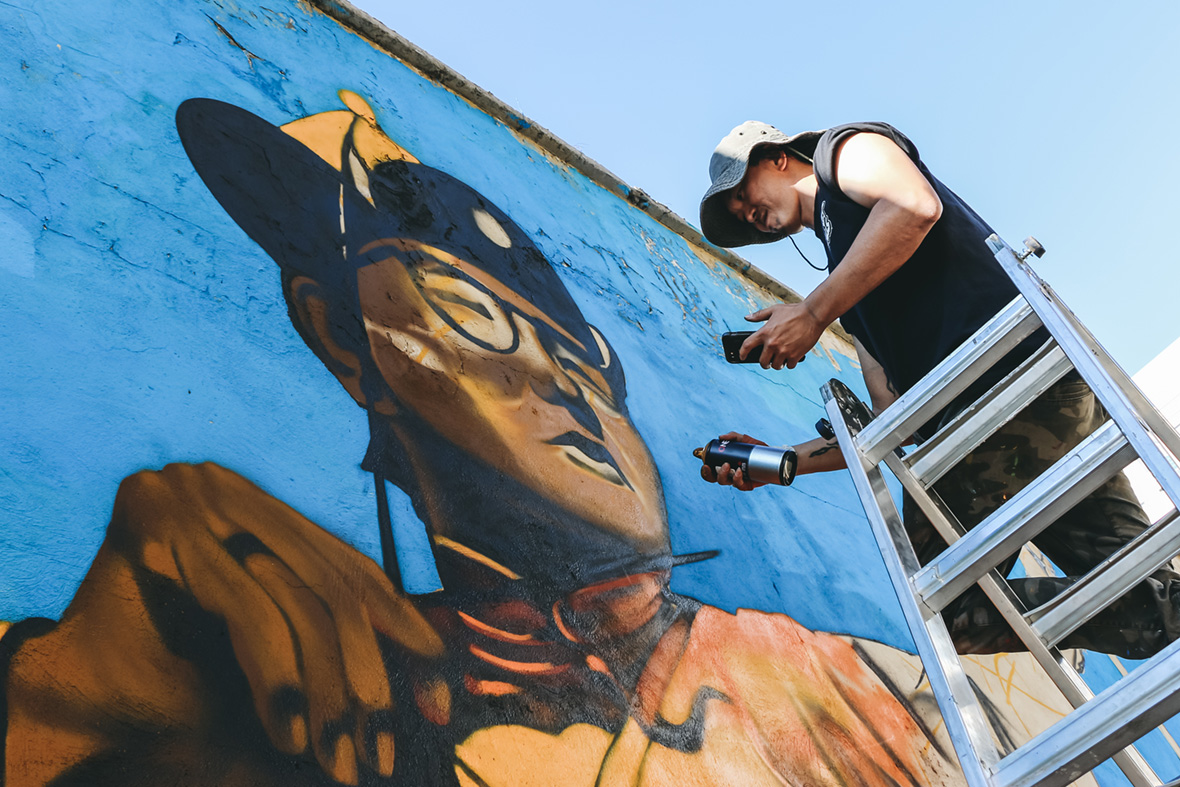
After completing his degree in 2005, he moved to Melbourne. And it was there where he discovered a thriving and welcoming street art scene. He followed in the footsteps of established local street artists, and like them, the city became his canvas. “I moved there without knowing anyone and with little idea of what to do with my life and career,” he recalls. “But in a short period of time, I met many amazing artists who took me under their wings and showed me the ropes. I haven’t looked back since.”
2005 年完成学位后他搬到墨尔本,这里拥有一个欣欣向荣的街头艺术场景。Heesco 追随许多当地成功街头艺术家的脚步,并和他们一样将整座城市变成了自己的画布。“我在没有任何工作和未来规划的情况下搬到了墨尔本。”他回忆起,“但是在很短的时间内,我遇到了许多优秀的艺术家。他们把我纳入麾下并为我指出方向。从那之后我再也没有回头。”
As Heesco developed his style, his colorful, expressive murals began garnering attention from the fine art world. As of today, he’s held numerous successful exhibitions across Australia and his murals can be found around the globe.
随着他的风格持续发展,他丰富多彩的作品开始引起艺术界的注意。迄今为止,他已经在全球举办过多次展览。
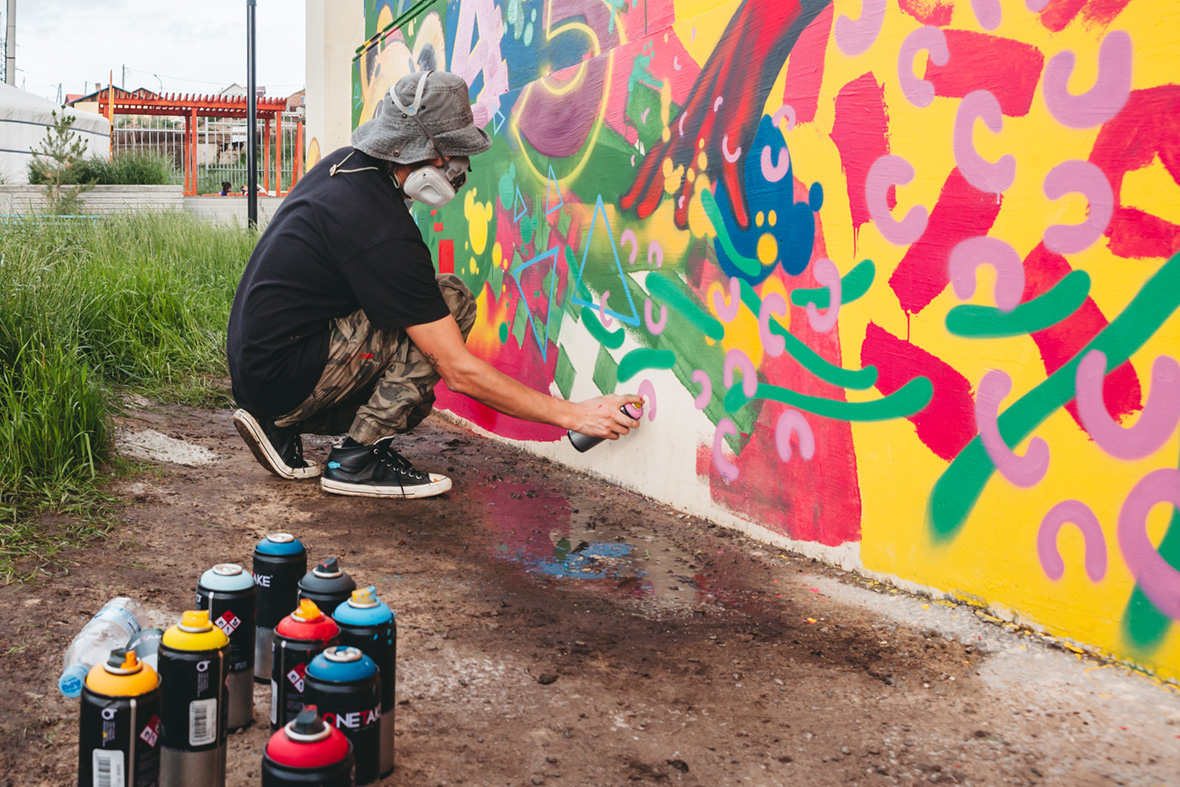
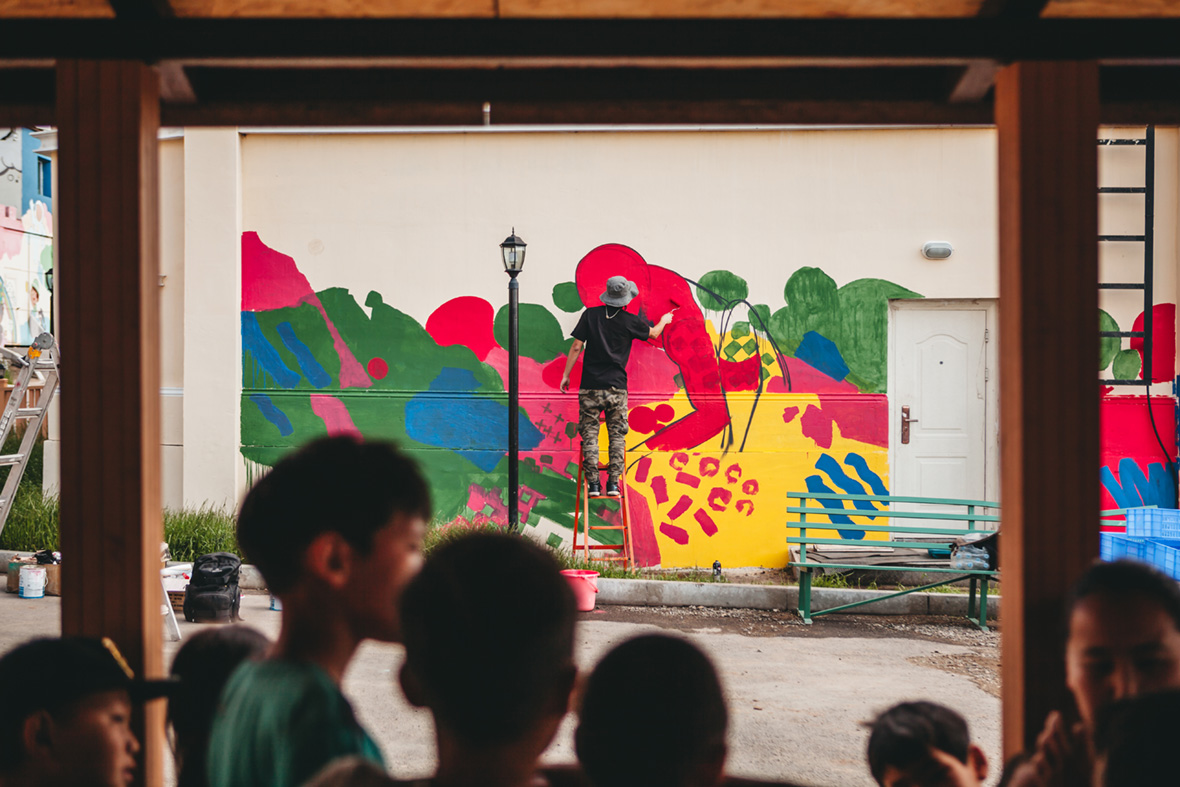
But his path to becoming a full-time artist wasn’t without hurdles. In Heesco’s early years as a working artist, he struggled to strike a balance between commissioned projects and personal works. Due to financial realities, he wasn’t able to invest all of his time solely on personal projects, but committing too much time on commercial works felt like a betrayal to his own artistic vision.
This outlook would change with time—rather than seeing commissioned work as compromises to his own creative vision, he saw them as opportunities to step out of his comfort zone. This was a eureka moment that encouraged him to take on subject matters he’d never painted before. “After seeing it as a challenge, I gave it my best shot,” he recalls of one particular project that he was initially reluctant to take on. “I learned how to paint buildings, trams, horses, and small portraits—all from just one job. In other words, I basically got paid to experiment and learn new skills.” With this new perspective, Heesco began to understand there were no constraints with what he could or couldn’t do in art. Even on personal works, he started challenging himself to take on subject matters that he previously considered to be too difficult or uncharacteristic of his personal style.
但在 Heesco 成为一位全职艺术家的道路上并非毫无阻碍。在刚开始从事艺术时,他努力地在商业项目和个人作品之间取得平衡。由于经济考量,他无法将所有时间都投入个人作品,但是一旦为商业项目贡献太多时间,他感觉像是背弃了自己的艺术眼光。
但是随着时间推移,这样的观点改变了——不是将商业项目视为妥协,现在的他反而认为这是走出舒适区的机会。这是一个恍然大悟的时刻,鼓励着他接受以前从未碰过的主题。“在将此看作一次挑战之后,我用尽了全力。”他回忆起当初一个他不愿意接下的项目。“它让我学会了如何绘制建筑物、电车、马匹和小型肖像——这一切都起源自一份工作。换句话说,有人付我酬劳让我去实验和学习新技能。”通过这种新视角,Heesco 明白到艺术并没有限制,没有什么是能做或是不能做的。即使在个人项目里他也开始挑战自己,开始画那些以前他认为过于困难、或是与他个人风格不相符的主题。
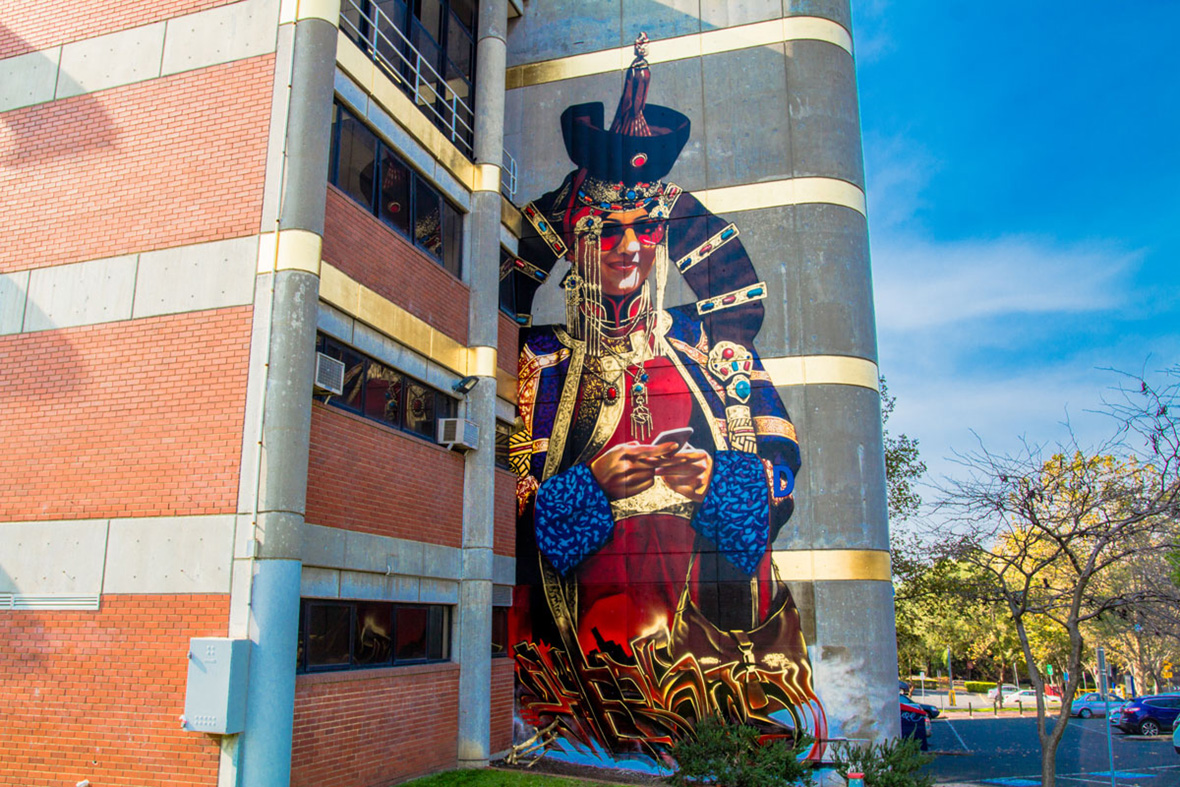
Heesco’s perspective of art continued to evolve after becoming a father: he started to see the value of art as a tool in educating the next generation. From an armor-clad Mongol warrior riding a skateboard to a smartphone-wielding girl in a Mongolian dress, his work started blending traditional Mongolian culture with contemporary pop culture, a way of reminding young Mongolians to not lose touch with their cultural roots. This neo-traditional style has now become one the most defining characteristic of his works.
在成为一名父亲之后,Heesco 对于艺术的看法也产生了变化:他开始将艺术视为教育下一代的宝贵工具。从滑着滑板的蒙古装甲战士,到手握智能手机、身穿传统服饰的蒙古女孩,他的作品开始将传统的蒙古文化与当代流行文化融为一体,提醒蒙古年轻人不要忘记他们的文化根源。这种新传统风格(Neo-traditional)近年来已成为他作品中最具代表性的特征。
Aside from just developing his own art, he’s also become a mentor to aspiring artists, teaching lessons that extend beyond just technical skills. He believes it’s far more important to encourage young creatives to stay perseverant and self-motivated, as these are what will ultimately contribute to their long-term success. “Art is the same as sports—you have to keep training to stay in shape,” he urges. “It doesn’t matter that you have a natural talent to run fast; if you don’t train and keep in shape, how can you stay good at it?”
除了专注于发展自己的艺术,他还成为了新晋艺术家的导师,教授的课程不仅仅是实际技能。他认为,鼓励年轻的创意人保持坚持不懈和自我激励更为重要,因为这些特质最终将有助于他们迈向成功。“艺术与体育是一样的——你必须不断训练以保持良好状态。”他敦促道,“你天生有跑得快的天赋,这并不重要。因为如果你不持续努力并保持体态,你怎么能继续跑得快呢?”
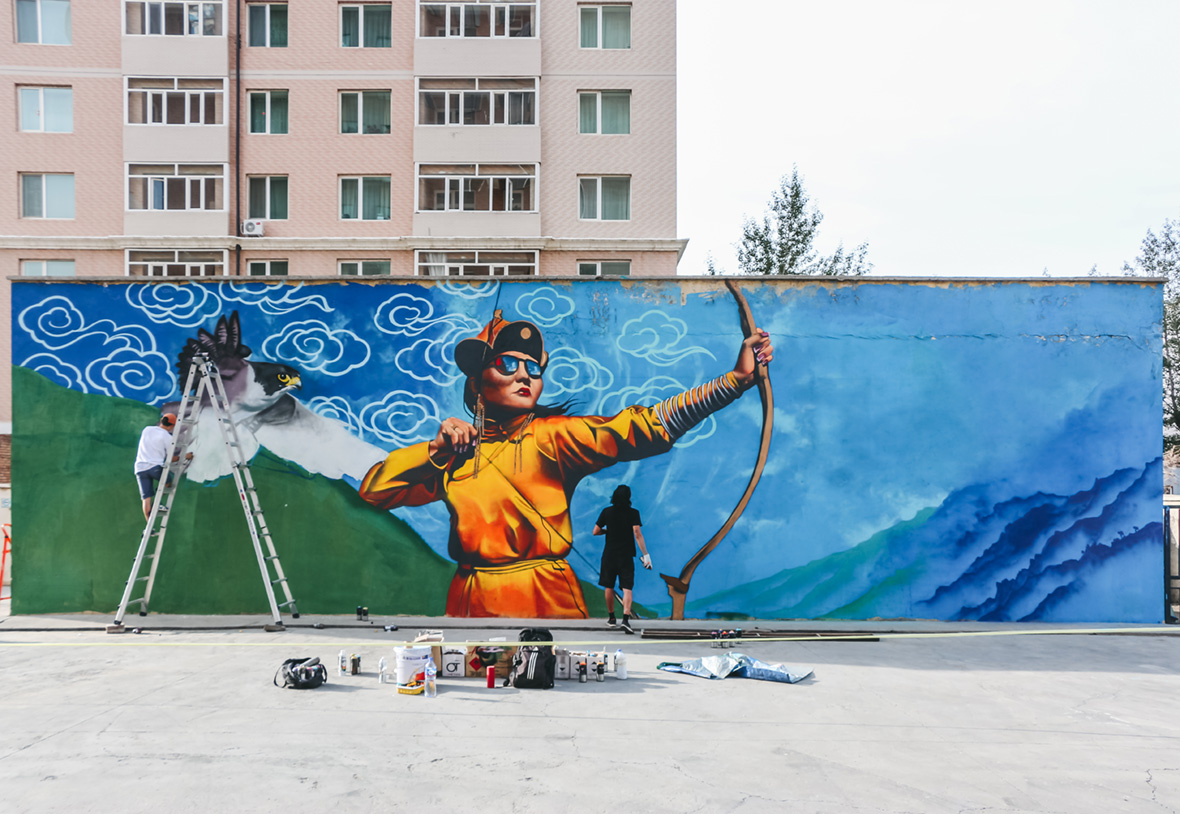
Website: www.heesco.com
Instagram: @heesco
Contributor & Photographer: Anand Tumurtogoo
Additional Images Courtesy of HEESCO & Baatarchuluun Nyamkhuu
网站: www.heesco.com
Instagram: @heesco
供稿人与摄影师: Anand Tumurtogoo
附加图片由 HEESCO 与 Baatarchuluun Nyamkhuu 提供

